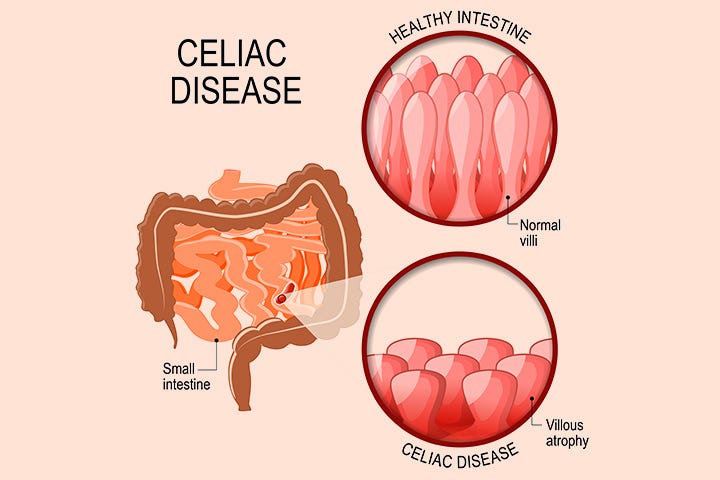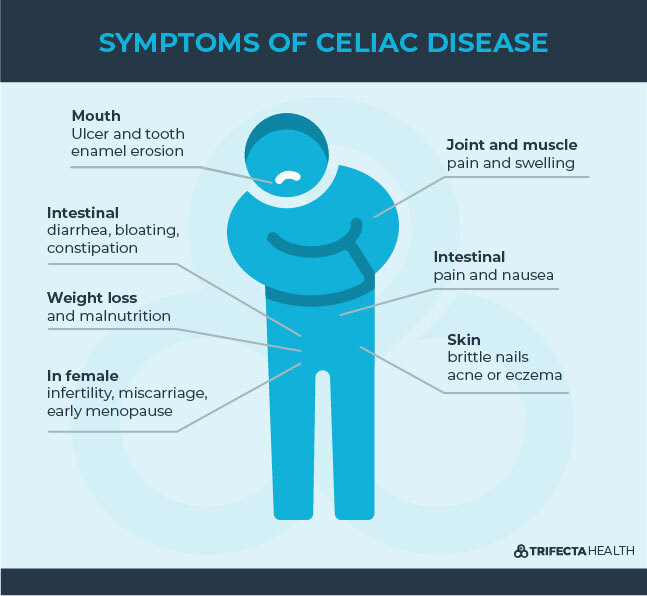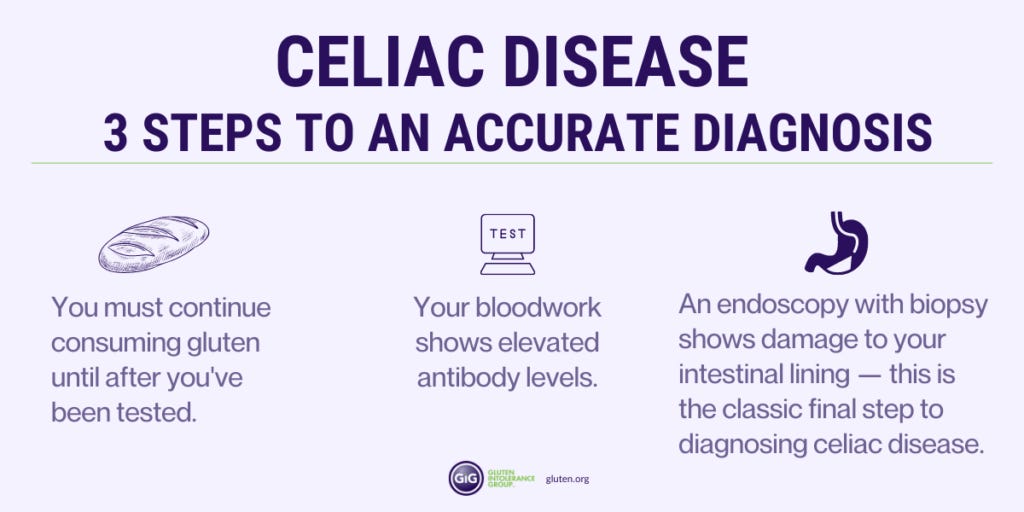
Celiac disease (CD) is a common digestive disorder that affects approximately 1% of European and North American populations (Chang, Burke, & Golub, 2011; Zimmer, 2011). Infants with CD are genetically susceptible and are reactive to foods containing a particular form of protein known as gluten. Such reactions from gluten cause an immune-mediated inflammatory response, damaging the intestinal lining (i.e., inflammatory bowel disease) (Chang et al., 2011).

Symptoms include distended abdomen, diarrhea, failure to thrive, and abdominal complaints. Eventually, CD leads to malabsorbtion of nutrients, which provides a pathway to other diseases, further disrupting overall health (Zimmer, 2011). CD can also be related to other disorders such as Down syndrome, and cancers treated by certain chemotherapy interventions. Toddlers will experience diarrhea and other symptoms usually by 2 years of age (Brown, 2014).

Considering the discomfort of symptoms and other conditions that can manifest from CD early, intervention is paramount. Brown (2014) suggested confirmation of the condition via blood tests for antibodies to gluten. Brown (2014) also suggested a nutritional assessment. Such an assessment would indicate what the toddler is currently eating. Any food containing gluten is completely restricted such as wheat, barley, rye, or additives. Suggested foods that could be consumed safely included rice, soy, corn, potato flours, meats, fruits, and vegetables (Brown, 2014). Removal of gluten is key, as it is a primary immunological trigger in celiac patients. Thus, abstinence from gluten will allow the gut lining to heal and mitigate symptoms.
References
Brown, J. E. (2014). Nutrition through the life cycle (5th ed.). Stamford, CT: Cengage Learning.
Chang, H. J., Burke, A. E., & Golub, R. B. (2011). Celiac disease. The Journal of the American Medical Association, 306(14), 1614.
Zimmer, K.P. (2011). Current problems in pediatric and adolescent health care. The American Journal of Medicine, 41(9), 244-247.
-Michael McIsaac
